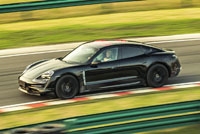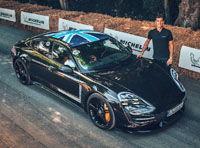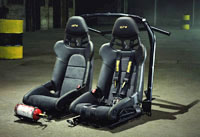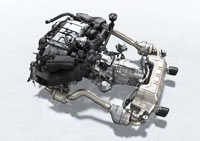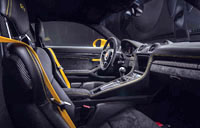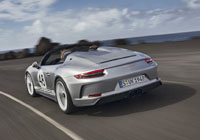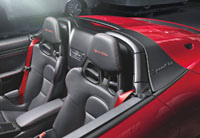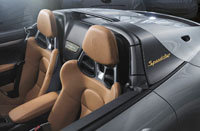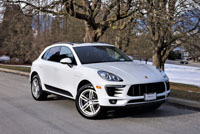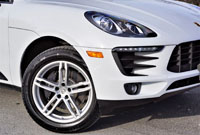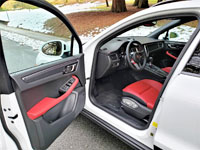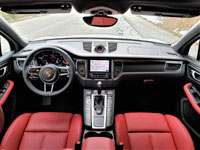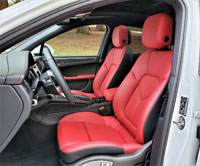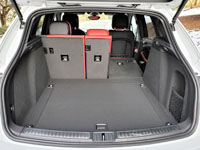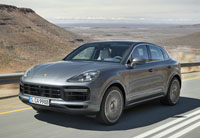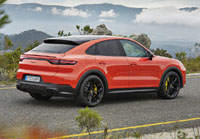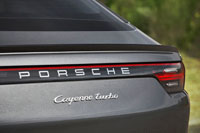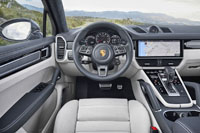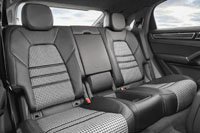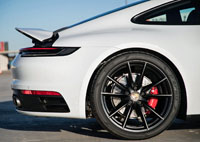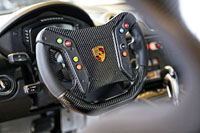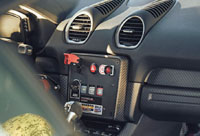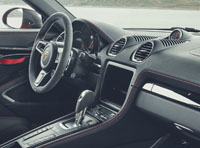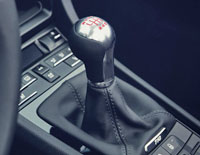
Porsche’s Panamera is a sport sedan like no other. Certainly there are a number of low-slung four-door coupes within the premium sector, but the Panamera is longer, wider and lower than most, and looks as close to the iconic 911 Carrera than any other car on the road.
The four-door coupe category is still relatively new, but it’s expanding while other segments are contracting. Mercedes-Benz created this segment along with the CLS-Class 15 years ago, five years before the Panamera became its first competitor in 2009. Audi’s A7 and Aston Martin’s Rapide quickly followed in 2010, a fair bit before BMW showed up in 2012 with its 6 Series Gran Coupe. Perfectly timed with the latter Bavarian model’s cancellation and the new 2020 8 Series Gran Coupe’s arrival, Mercedes will soon deliver a four-door coupe triple threat thanks to the all-new higher-priced (and clearly named) GT 4-Door Coupe, which will soon join the recently updated second-generation CLA-Class and third-gen CLS, so it’s not as if growth in this category is slowing, or at least sales aren’t falling off as quickly as they are amongst more traditional luxury sedans.
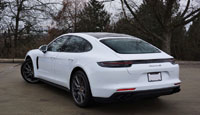
Some notable four-door coupe mentions at higher and lower levels of the auto market include the limited production (120 units) Aston Martin Rapide-based 2015 to 2016 Lagonda Taraf, which was gorgeous to my eyes at least, but priced at a stratospherically $1 million-plus, while possibly more interesting has been the success of smaller entries, including the just-noted Mercedes-Benz CLA-Class, the BMW 4 Series Gran Coupe, and the Audi A5 Sportback, which have pulled this rakish body type down-market nearly as far as the Volkswagen Arteon (previously the CC) and Kia Stinger.
Returning to the loftier price bracket, Lamborghini has been teasing us with a potential production model along the lines of the beautiful 2008 Estoque concept for more than a decade (I think it would’ve been a strong seller), while Bentley hasn’t stopped talking up the possibility of an even sleeker sport sedan. Otherworldly to some, these two models could actually be sensible business cases due to their Volkswagen group ownership and familial connection to this very Panamera. Bentley, for one, already uses the same VW AG-created MSB architecture found under this Panamera for its new Continental GT coupe and convertible plus its Flying Spur sedan, a version of which could also be modified to work with a future Estoque.

It’s not like this would be an unusual move, with the Bentley Bentayga and Lamborghini Urus sharing underpinnings with the Porsche Cayenne and new Cayenne Coupe respectively, not to mention the Audi Q7, Q8 and new global market Volkswagen Touareg (that we no longer get here), but as exciting as it might be for these exotic players to dip their toes in the four-door coupe waters, buyers who want to spend $300,000-plus in this class, yet still requiring a reliable option, have no other choice but a loaded up Panamera.
And yes, if you check off every 2019 Panamera Turbo S E-Hybrid Executive box on Porsche’s online configurator you’ll be paying north of $320k, which will provide you with an optional exclusive colour, the car’s largest set of 21-inch alloys coated in the same exclusive paint choice, an upgraded interior with the highest quality of leathers covering almost every possible surface that’s not already trimmed in hardwood or carbon-fibre, plus all available technologies.

The Panamera Turbo S E-Hybrid was new for 2018, and thanks to Porsche I was able to drive it along with a number of other new and updated models last year. The version I tested featured the regular sloped trunk lid and normal non-extended wheelbase, and it was mind-blowingly fast thanks to 680 net horsepower. I also tested last year’s entirely new Sport Turismo wagon, that I happen to like best, although that car’s drivetrain was identical to the Panamera 4S shown right here in this review, and therefore made 440-horsepower from a 2.9-litre twin-turbo V6.
Bringing all things Panamera up to 2019 speed, no changes have been made to any of the models mentioned in this review so far, other than minor increases to pricing across the line, the car on this page precisely as it was for the 2017 model year when the second-generation Panamera was introduced. This said 2019 hasn’t been without improvements to the Panamera line, thanks to the addition of a 453-horsepower twin-turbo 4.0-litre V8-powered GTS model that now slots between this 4S and the Panamera Turbo in both performance and price. The car I’m reviewing here starts at $119,600, by the way, while the new GTS can be had for $147,400, and the Turbo for $174,200.

No GTS was available at the time of testing, unfortunately, but I was truly okay having another stint in a 4S. It makes 110 more horsepower than the 330-horsepower base Panamera after all, and uses all four wheels for added grip. The snarling exhaust note is fabulous in Sport mode, crackling and popping when lifting off the throttle, but rest assured that the fiercer Hyde side of its personality becomes a docile Jekyll when the drive mode selector is moved over to its default setting.
The Panamera’s ideal balance between opulent luxury and outrageous performance is its best asset. No other four-door combines its level of sports car-like agility with such impressively detailed interior finishings. Its low-slung bodywork bucks against today’s taller SUV trend; Porsche providing its Macan and Cayenne for folks who want go-fast performance with a better view of the road.

The Panamera manoeuvres through serpentine corners like nothing so sizeable has ever been able to before, yet its ride is impressively smooth. Whether enduring inner-city laneways, overcoming inadequately paved railroad crossings and aging bridge expansion joints, or coursing down a circuitous backcountry road inundated with broken asphalt, the Panamera offers ample suspension travel for dealing with the worst bumps and potholes without becoming unsettled. Its compliance and/or firmness depends on the trim and wheel options chosen, of course, but I’ve driven every grade on offer other than the new GTS, and all provide track-worthy performance with comfort levels that I’d be more than satisfied to live with for all regular commutes and errand runs, let alone weekend getaways.
My test car’s optional Satin Platinum finished 21-inch alloy wheels on 275/35 front and 315/30 rear Pirelli Cinturato P7 performance tires are the biggest available, so it wasn’t like I was cossetted with the base 4S model’s 19s, which are identical to the most entry-level of Panamera’s 265/45 front and 295/40 rear ZRs, by the way, a car that can be had for only $99,300 plus freight and fees.
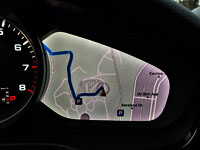
That base Panamera in mind, it’s hardly a slouch thanks to a 5.7-second launch from zero to 100km/h, or 5.5 seconds with its available Sport Chrono Package, whereas my 4S tester can do the deed in a mere 4.4 seconds in standard trim or 4.2 seconds with its Sport Chrono Package. The 4S also blasts past 160km/h in only 10.3 seconds, slicing 3.3 seconds off of the base trim’s zero to 160km/h time, all ahead of a terminal velocity of 289km/h, a stunning 25km/h faster on the track than the most basic Panamera.
As phenomenally fun as all this high-speed action sounds, there are plenty of quicker Panameras available. The new GTS, for instance, can hit 100km/h from standstill in only 4.1 seconds, while the Turbo blasts past the mark in a scant 3.8 seconds, and finally the sensational Turbo S E-Hybrid needs just 3.4 seconds to charge past 100km/h. Top speeds increase similarly, with the Turbo S E-Hybrid capable of a lofty 310 km/h, but when compared to the majority of sport sedans even this Panamera 4S performs better.
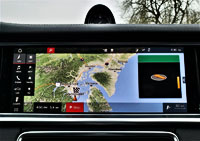
Its new eight-speed twin-clutch PDK transmission delivers fast, smooth, paddle-activated shifts, and torque-vectoring all-wheel drive maintains the chassis’ awesome adhesion to tarmac no matter the weather or road conditions, while I must also say it looks just as eye-arresting when blurring past at high speed as it does when cruising around town.
As mentioned earlier, glossy black exterior trim isn’t standard, but nevertheless my test car’s darkened accents were an attractive contrast against its white paint. Normally the Panamera gets satin silver and/or bright metal detailing, but on the other hand you can also have the mirror caps, door handles, badges, etcetera painted in gloss black.
This said the possibilities are almost limitless inside, but each Panamera’s incredibly fine attention to detail is what makes its interior stand out above many peers, such as all of the industry’s best composites and leathers, available hardwoods, aluminum or carbon-fibre inlays, plus digital interfaces that are so brilliantly high in definition that it seems like you can dip your fingers right into the depths of their fabulously rich contrasted displays and graphically illustrated imagery.
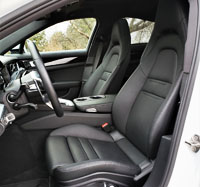
Yes, the Panamera provides some of the best digital displays available, whether ogling the classic Porsche-style five-dial instrument cluster, its centre ring being the only analogue component in an otherwise wonderfully colourful arrangement of screens, the one on the left for driving-related info and the right-side monitor incorporating a comprehensive multi-information display including mapping for the route guidance system.
Alternatively you can choose to view that map over on the long, horizontal infotainment display atop the centre stack, which looks nearly three-dimensional when doing so. All the usual touchscreen gesture controls make this as simple to use as a smartphone or tablet, and speaking of your phone it also syncs with Apple CarPlay or Android Auto, while providing all of the types of functions expected in this class including an as-tested surround camera system that, together with audible and visual front and rear sonar, makes parking a lot easier.

The majority of controls on the raked centre console are touch-sensitive, needing only a slight push and click to engage. All the buttons, knobs and switches feel very high in quality too, the Panamera’s interior second to none for quality construction. The console’s surrounding surface treatment is glossy black, but nevertheless it’s quite easy to keep clean due to a glass-like smartphone material, although the piano black lacquered detailing found elsewhere in my tester’s cabin, particularly a section on the ashtray at the very base of that centre console, was always covered in grime, dust, etcetera. On the positive you don’t have to opt for piano black, but can choose one of many options that will keep the cabin looking tidier even when dirty, although it should be said there’s absolutely nothing wrong with being able to see what needs cleaning for the sake of sanitation.
Fortunately the leather-clad sport steering wheel, where my hands were most of the time, had no such yucky buildup of filth. Instead, I was greeted to one of the best of its type in the industry. Its narrow spokes are elegant, hollowed out at centre for an even lighter, more performance-oriented appearance, while its integrated buttons and scrolling knurled-metal dials are well crafted with especially tight fitment and good damping. As per usual, the button for the heatable rim is hidden within the base of the lowest spoke, an intelligent design for sure, but some may find it too easy to turn on or off when spinning the wheel. I like that it automatically turns on when starting the car, or likewise stays off, depending on the way you’ve set it up.
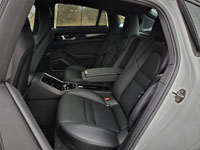
Features in mind, my test car came stocked up with three-way heated and ventilated front seats, plus a superb optional 710-watt 15-speaker Bose Centerpoint 14-channel surround sound stereo upgrade, which should only be shown the door if going for the 1,455-watt 22-speaker Burmester 3D High-End Surround system (I’ve tested this top-line system before and it’s amazing). As good as the audio performance was, my tester didn’t include the previously noted Sport Chrono Package, so it was 0.2 seconds slower off the line (not that I could notice), and the clock on top of the dash only featured an attractive looking black dial with white numerals and indices, instead of the upgraded chronometer version with both analogue and digital readouts.
Still, due to including an available full rear console incorporating a large high-definition touchscreen, three-way heatable seat switches, twin rear auto climate controls resulting in a four-way auto HVAC system front to rear, powered side and rear window sunshades, plus a large two-pane panoramic moonroof above, not to mention the Panamera’s usual set of ideally shaped sport bucket rear seats that are as comfortable and supportive as those up front, I might have been just as happy being chauffeured as I was driving, but as life has it I didn’t have the means (or an available friend) to do the driving, so I simply enjoyed my nice quiet rest in the back seat while taking notes.
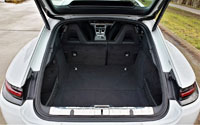
To be clear, the second-gen Panamera is now so excellent in every way that it’s near impossible to find much to complain about. Of course there’s not as much room in the rear as a 7 Series or S-Class, but providing limousine levels of roominess is hardly the Panamera’s purpose. Truth be told, no matter the model tested I have never been uncomfortable in back, and let’s not forget that Porsche would be more than happy to provide you with a longer-wheelbase Executive body style if driving around larger passengers is part of your routine, which means that you won’t have to say goodbye to beautiful design and sensational performance just to maintain a practical lifestyle.
And that’s the gist of the Panamera. Thanks to its wide variety of trims, packages and options, all of which are viewable right here on CarCostCanada, where you can also learn about manufacturer rebates and dealer invoice pricing that could save you thousands, this four-door Porsche provides something for almost every sport/luxury car shopper.
Story credit: Trevor Hofmann
Photo credit: Karen Tuggay

